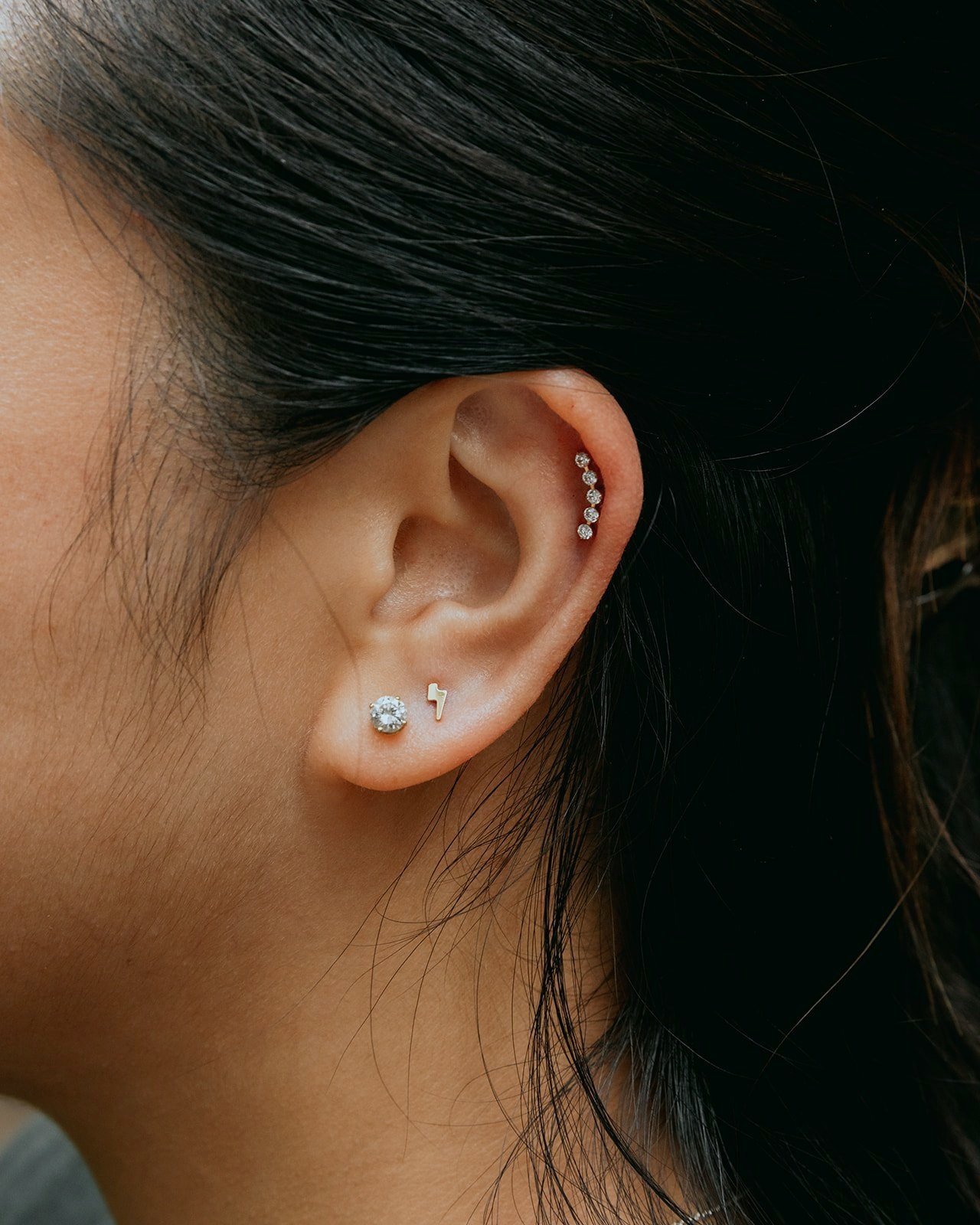
aftercare
caring for your piercing:
Let’s start with two very important things to remember:
DO NOT TOUCH YOUR PIERCING. The only time you will touch your piercing is when you are cleaning it, and you will first wash your hands.
DO NOT REMOVE YOUR JEWELRY. New piercings can shrink the moment jewelry is removed, making it painful or impossible to get it back in.
What is normal during the healing process:
Bleeding, bruising, and/or swelling are fairly common with a new piercing.
Some tenderness or discomfort in the area of a new piercing can be expected for several days or longer. Discoloration (redness) and itching during healing process are also fairly common.
Secretion of a whitish-yellow fluid (not pus) is part of the healing process and is to be expected. It is liquid when it leaves the body but dries into “crusties.”
Piercings will go through “ups and downs” while healing. They may seem healed for a while, and then regress. The key is to continue your cleaning routine throughout initial healing time.
Piercings (including healed piercings) that are not cleaned daily may smell unpleasant. This does not necessarily indicate a problem.
Jewelry should not be expected to rotate or move freely in most piercings, even after healing. • Most piercings will shrink or close very quickly if the jewelry is removed, so if you like your piercing it is vital to LEAVE YOUR JEWELRY IN AT ALL TIMES!
What is NOT normal during the healing process and when to seek medical attention:
Signs and symptoms of infection, including, but not limited to, redness, swelling, tenderness of the procedure site, red streaks going from the procedure site towards the heart, elevated body temperature, or purulent drainage from the procedure site.
Downsizing:
After 4-6 weeks of piercing, it is recommended you schedule a “downsize” appointment for a shorter post. The longer backing of your jewelry, which accounts for initial swelling, will be replaced with a shorter backing to prevent snagging and irritation, and help the healing process move along smoothly.
piercing aftercare:
Wash your hands thoroughly before touching your new piercing.
Rinse ears with warm water after shampooing hair to avoid soap buildup.
Spray the saline directly on the piercing to liberally flush the piercing TWICE A DAY. You may need to use a non-woven gauze to clean away any excessive debris or “crusties” that may have collected on the jewelry around the piercing.
Do not touch, twist, or pick your at earrings to avoid prolonged healing times.
Do not remove your earrings, even at night.
Do not sleep on your piercing.
things to avoid:
Avoid touching your piercing, except when you are cleaning it.
Avoid oral contact or contact with other people’s body fluids.
Avoid using any aftercare products or ointments that were not suggested by your piercer.
Avoid getting lotions and/or makeup in or around your piercing.
Avoid pools, hot tubs, lakes, rivers, etc. Using a waterproof, breathable bandage (such as Tegaderm) is a viable option for some piercings.
